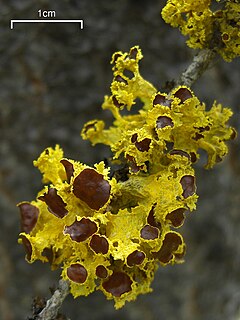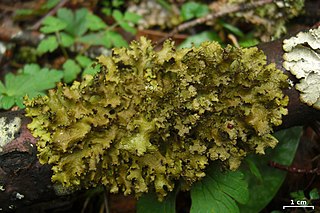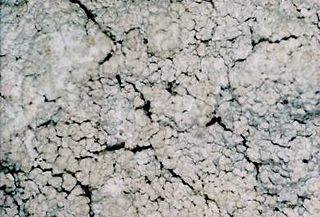New York Law School (NYLS) is a private law school in Tribeca, New York City. NYLS has a full-time day program and a part-time evening program. NYLS's faculty includes 54 full-time and 59 adjunct professors. Notable faculty members include Edward A. Purcell Jr., an authority on the history of the United States Supreme Court, and Nadine Strossen, constitutional law expert and president of the American Civil Liberties Union from 1991 to 2008.

The Yunnan box turtle is a species of turtle in the family Geoemydidae. It is believed to be endemic to Yunnan, China and was suspected to be extinct since the early 20th century; the last verified specimen was collected in 1940.
Kaimar Saag is an Estonian professional footballer who plays as a striker for Paide Linnameeskond.
Michael S. Saag is a physician and prominent HIV/AIDS researcher at the University of Alabama at Birmingham (UAB). He holds the Jim Straley Chair in AIDS Research, is Director of the Division of Infectious Disease and of the William C. Gorgas Center for Geographic Medicine, and Director of the Center for AIDS Research. He is also the founder of the 1917 Clinic, a comprehensive AIDS treatment and research center at UAB Saag is a frequent lecturer at AIDS conferences around the world and is credited with performing pioneering clinical trials for several antiretroviral drugs now in common use for HIV treatment and for first demonstrating the clinical value of "viral-load testing" in HIV/AIDS treatment. In 2009 Saag was elected chairman of the HIV Medicine Association of the Infectious Diseases Society of America. In 2019 Saag began serving on the Presidential Advisory Council on HIV/AIDS.

Sarson ka saag is a popular vegetarian dish from the northern region of the Indian subcontinent. It is made from mustard greens (sarson) and spices such as ginger and garlic. It is often served with Makki ki roti. Sarson ka Saag and Makki ki Roti is closely associated with Jammu, Himachal Pradesh, Haryana and Punjab and is considered a special dish in entire North India. It is eaten especially in the winter season.

Allocetraria is a genus of lichenized fungi in the family Parmeliaceae. It consists of 12 species, with a center of distribution in China.

Vulpicida is a genus of lichenized fungi in the family Parmeliaceae. Circumscribed in 1993 to contain species formerly placed in Cetraria, the genus is widespread in Arctic to northern temperate regions, and contains six species. The genus is characterized by the presence of the secondary metabolites pulvinic acid and vulpinic acid, compounds that when combined with usnic acid, give the species their characteristic yellow and green colors.

Tuckermannopsis is a genus of foliose lichens in the family Parmeliaceae.

Cetrelia is a genus of leafy lichens in the large family Parmeliaceae. They are commonly known as sea-storm lichens, alluding to the wavy appearance of their lobes. The name of the genus, circumscribed in 1968 by the husband and wife lichenologists William and Chicita Culberson, alludes to the former placement of these species in the genera Cetraria and Parmelia.

Lepraria is a genus of leprose crustose lichens that grows on its substrate like patches of granular, caked up, mealy dust grains. Members of the genus are commonly called dust lichens. The main vegetative body (thallus) is made of patches of soredia. There are no known mechanisms for sexual reproduction, yet members of the genus continue to speciate. Some species can form marginal lobes and appear squamulose. Because of the morphological simplicity of the thallus and the absence of sexual structures, the composition of lichen products are important characters to distinguish between similar species in Lepraria.
Cetrariopsis is a genus of foliose lichens in the large family Parmeliaceae. The genus contains three species, including the type, Cetrariopsis wallichiana.
Coelopogon is a genus of lichen-forming fungi in the family Parmeliaceae. The genus contains two species found in southern South America and South Africa.

Leptogium rivulare, also called the flooded jellyskin lichen, is a species of lichen belonging to the family Collemataceae.
Usnea glabrata is a species of beard lichen in the family Parmeliaceae. It was first described as a variety of Usnea plicata by Erik Acharius. Finnish lichenologist Edvard August Vainio transferred it to the genus Usnea in 1915. The lichen grows on bark and is widespread throughout Europe, although it is probably locally extinct in a few locations. It is characterized by small shrubby thallus, constriction of secondary branches at their base, presence of large soralia, and the absence of both papillae and isidia.

Usnea fulvoreagens is a species of beard lichen in the family Parmeliaceae. It was first described by Finnish lichenologist Veli Räsänen in 1931 as a variety of Usnea glabrescens. He raised it to distinct species status in 1935. The lichen has a shrubby thallus that is richly branched, and bases that are blackened. The presence of norstictic acid is often used to differentiate this species from other similar species. It has a widespread distribution in Europe.
Usnea glabrescens is a species of beard lichen in the family Parmeliaceae. It grows on bark, has a shrubby thallus with a blackened base, and a thick cortex. Several chemotypes of this species have been reported. The lichen is widely distributed in Europe.
Andres Saag is an Estonian mycologist.

Usnocetraria is a genus of foliose lichens in the family Parmeliaceae.
Tiina Randlane is an Estonian mycologist, lichenologist.

Anziaic acid is a depside found in lichens. It gives a red reaction in the C test. The two phenolic rings have a pentyl side chain. It is an ester dimer of olivetolic acid.










